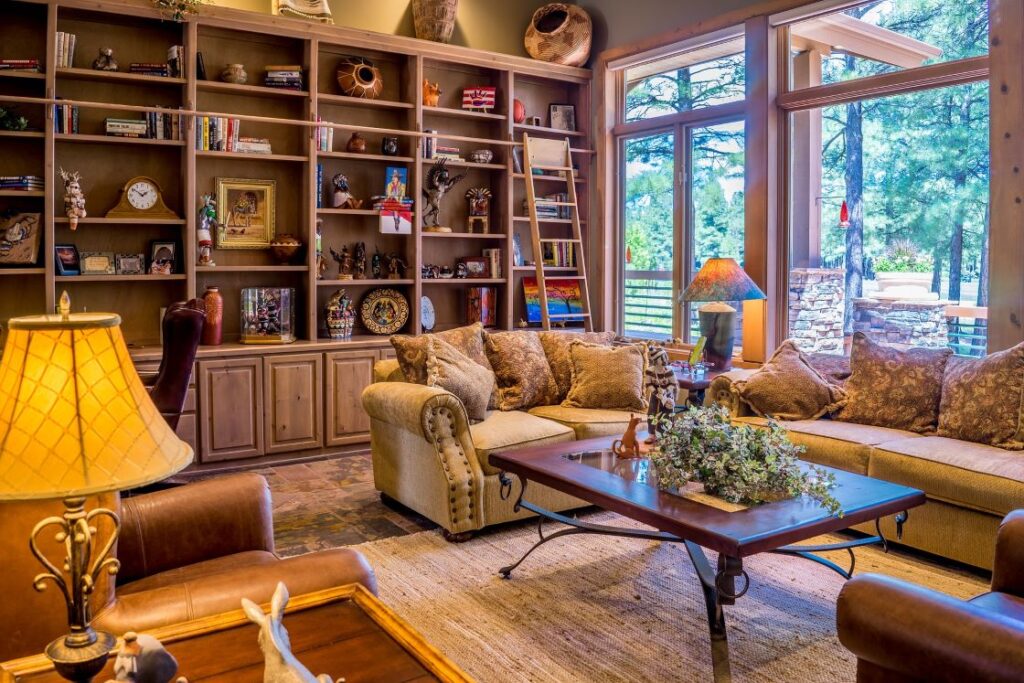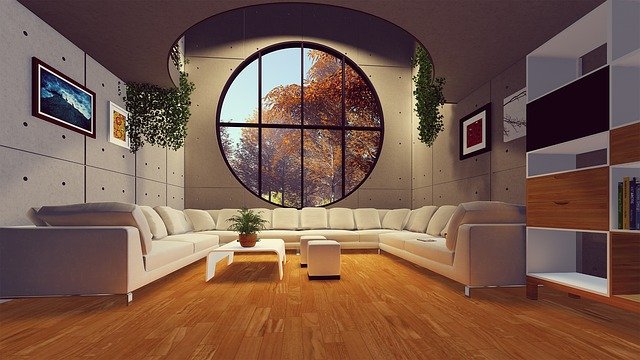First of all you should take a tour inside the environment you need to photograph, and look through the camera, which angle strikes you most, which best enhances the subject you are photographing, whether it is a hotel room, a large kitchen a house to sell or any other real estate entity.
Details in real estate photography
When you have to photograph a real estate, you have to think about those little details, which will help you do the job perfect.
Ambient light
Ambient light represents the natural light inside a room and is certainly one of the most pleasant because it is a very delicate type of lighting, which evokes soft, diffused atmospheres and which gives a certain realism to the colors, lights and shadows of the room.
Ambient light is a light that we know well, that we like because it is perceived as natural, exactly as we see it every day.
The ideal would be to photograph the interior of a room with a window open but in cloudy weather in order to blur the sunlight like a natural panel but you won’t always be lucky enough to work in ideal conditions.
If there is direct sunlight, obscure everything with a white curtain or use artificial panels. Remember to choose a time suitable for the shooting, usually the first morning slot is perfect but the sunset time is also fine, especially if you want to give a more romantic aspect to everything.
Artificial light
Artificial light should not be completely demonized because it may be necessary for the purpose of a shooting.
Still photography may also need an external flash so don’t forget to add it to your bag so as to suddenly illuminate low-light scenarios such as spas or rooms with different types of light sources. You can use flashes, triggers or a studio kit to provide artificial lighting that looks like natural light, without distorting the colors and without disturbing the style of the environment.
The secret of using artificial photography, in interior, real estate or hotel photography is exactly this, reproducing natural light, through artificial light.
The first mistake you make is to have two shadows in the final photograph, this is because two or more flash lights will be used improperly.
The importance of preparing the environment to be photographed

The first impression of the customers counts because your photos will not have a second chance, if they are discarded, the house, or the hotel, will be branded in black.
Photographs provide a very important business card for a sale and this is essential for a successful business.
It is therefore necessary to make the most of the existing environment and in some cases prepare it for the shooting. Know that you will not have to leave anything to chance and evaluate all aspects of the room, primarily the cleanliness.
A good lens is capable of showing the public even aspects that may not be visible at first glance like dust accumulated in the corners. Photographing a floor and discovering in the second instance the presence of grains of dust is bad because it gives the idea of a dirty or in any case unsanitary place.
Before taking pictures it is necessary that you make arrangements with the hotel in order to allow the structure to clean all the rooms involved.
Curtains should be symmetrically open or closed and well ironed, don’t let small creases ruin the final image. A clean, well-groomed blanket with decorative pillows or delicate flowers should be placed on the bed.
The aim is to suggest that the customer is welcomed and pampered by the staff, therefore he uses symbols for this purpose.
The presence of plants or flowers gives a romantic and affectionate note that gives a good input to potential buyers.
If the target of the hotel is the couple, it uses artificial lighting as antique lamps and abat-jours, the result is certainly a more characteristic and suggestive aspect. The important thing is to always consider that what will be in the picture must also be there for the live customer, you cannot think of using accessories that will not be there in reality.
Moving away from the rooms and approaching places open to the public, these too must always be clean and tidy.
Do not forget that there is the possibility of using models that pretend to be customers in order to set and thematize the rooms, offering a new interpretation.
Post-production: yes or no?
The post-production can have a dominant role for real estate photography as there are some techniques specifically designed for this type of photography.
For example, using the tripod it is possible to combine two or more shots in post-production to correctly balance the differences in light and let all the parts are perfectly illuminated. The process is simple: take a photo of the room with a preference for colors. You will notice that the white colors or the window are completely burned out, right?
Take a second photograph focusing on these last aspects, now the window is very well represented and you will see the blue sky and the landscape behind it.
Now all you have to do is overlap the two photos in order to blend the two aspects and let the composition be balanced and detailed in every single aspect. Some photographers also use this technique to accentuate the presence of any shadows, in this case 3 different shots are taken with different exposures, the result is called HDR.
A good post-production allows you to maximize any colors in order to attract more visual attention of a potential customer.
Don’t forget that retouching photos is useful for decreasing photographic noise, adding some light shades coming from the window to warm up the final photograph, straightening the horizon line, or removing spots that were not noticed at first.
The important thing is not to overdo it as it could be a double-edged sword.
The risk is to mystify the final image and lead the customer to think negatively about the structure. The ideal post-production is that which is not noticed but is present.
Precisely for this reason, the advice is to practice with the various photo-retouching programs or attend a digital course in order to fill your gaps.

Conclusion
We have therefore understood the value of real estate photography intended as a tool to attract potential buyers, enhance your structure and maximize a room in a wise way.
It is not a simple type of photography and not everyone can do it as it is necessary to have a respectable photographic kit that is consistent with the various types of structures that you will encounter.
It is necessary to have a good feeling with the photo of the architecture and the photography of interiors as the design must be an accessory element to be maximized and not destroyed, finally it is good to have an immoderate passion in the background that moves everything else.
If you want to approach this type of photography it is necessary to study in advance and practice to understand if there is a good basic attitude.
Finally, the last tip is to make a checklist of all the shots to take so as not to miss opportunities and let yourself be taken by a distraction with the risk of forgetting some important photos.
In this way you will be able to manage the time well, very often scarce given that some structures do not have much time available as they are open to the public, and plan the entire photo shoot well.
Some sectoral photographers advise to always make a wide frame, a narrow frame, a vertical angle and an angle that puts in detail a specific object leaving the background blurred.
By doing this you will have 4 shots of the same scene that will make the difference when choosing the final images.
As far as hotel facilities are concerned, it is essential that they rely on the skilled hands of a professional, in order to increase their sales, provide a professional and high quality service to their customers and distinguish themselves from other competitors.
This is why it is important to rely on a professional for a professional photo shoot.

